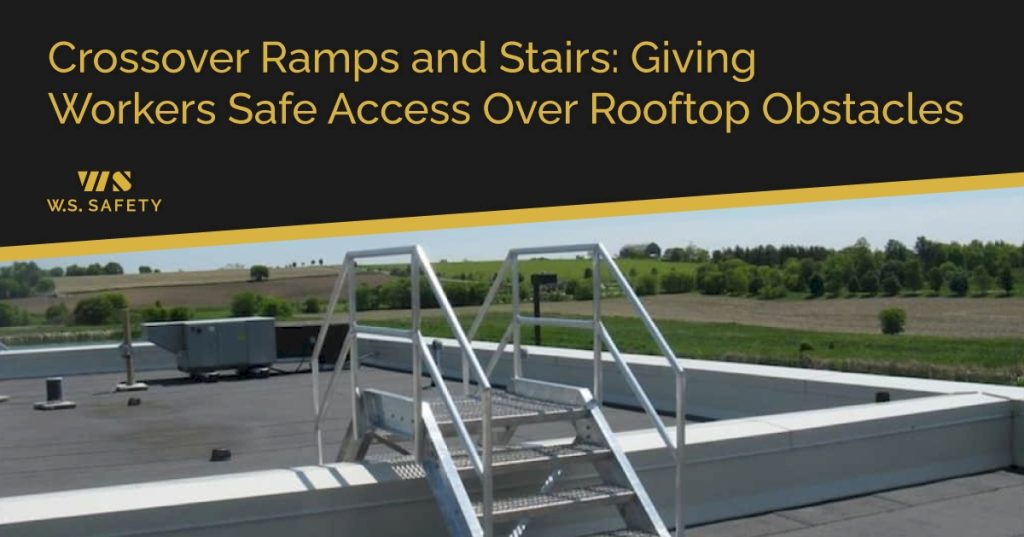Custom Roof Crossover Stairs And Crossover Ramps
Custom fabricated roof crossover stairs are non-penetrating raised platforms that give workers a safe way to move across a rooftop work site where there are trip or fall hazards.
Every rooftop is different and will present unique challenges for workers. Pipes, cables, parapets and changes in level can be difficult to move across, let alone transport any equipment. Weather conditions can exacerbate these hazards, creating slippery or obstructed surfaces and dangerous working conditions.
While measures such as rooftop guardrails can be a good safety solution on their own, in some cases crossover stairs or ramps will provide more comprehensive fall protection, especially when used in tandem with guardrails and warning flag systems.
Rooftop crossover systems are modular and can include stairs, ladders and ramps. Crossover ramps are an alternative to stairs that allow workers to move around wheeled equipment easily and safely. Often also incorporating ladders and platforms, crossover systems are custom made and non-penetrating, and can be put together on site. Crossover ramps and roof walkway platforms also protect the rooftop, helping workers avoid surface contact.
OSHA Platform Requirements
OSHA rewrote many of its requirements for work platforms in January 2017, with key updates to a number of existing regulations. It is important to ensure that crossover stairs or ramps meet all OSHA requirements before implementing them.
Let’s take a look at several key OSHA requirements for platforms, guardrails and crossover stairs. For a complete list of OSHA’s regulations regarding walking and working surfaces, see HERE.
1. Guardrails
OSHA requires that guardrails be implemented around any working surface at or above four feet in height. The guardrails must be at least 42 inches tall and withstand 200 pounds of force from any direction.
2. Platform Stabilization
If the height of any rooftop platform is greater than four times the width of its base, it requires further stabilization. OSHA requires that in these cases, “one must use outriggers, counterweights, or comparable means that stabilize the mobile ladder stands and platforms and prevent overturning” [OSHA 1910.23(e)(1)(vi)].
3. OSHA Crossover Stairs Requirements
OSHA has specific height and depth requirements for crossover stairs, including:
- Stairs must have a rise of no more than 10 inches and a depth of no less than 7 inches
- Any openings including ladder holes must incorporate a self-closing safety gate to protect workers from falling through
- Crossover stairs that do not incorporate a platform also require a safety gate and 22 inches of clearance to safely open and close the gate as needed.
- Modular crossover rooftop systems must be able to withstand four times the designed load capacity (a key requirement for manufacturers)
At WS Safety, our custom rooftop crossover systems are designed and manufactured in full compliance with OSHA standards.
Crossover Ramps : Safe, Cost-Effective And Non-Penetrating
Crossover rooftop systems including stairs, ramps, ladders and platforms are a cost-effective and highly customizable way to address safety concerns on your rooftop. We offer fully customizable rooftop stairs and crossover systems that can help keep your workers safe, so they can get the job done efficiently. Our professional team will assess the site and advise on the application best-suited to your needs.
Contact us today for more information!


